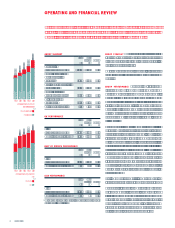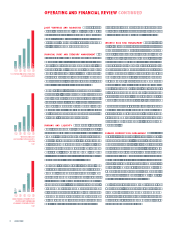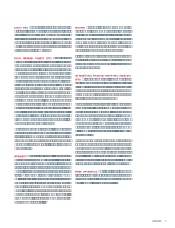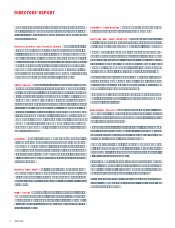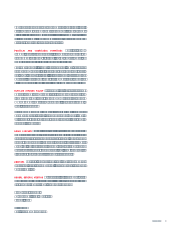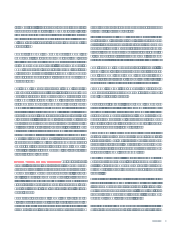Tesco 2004 Annual Report Download - page 10
Download and view the complete annual report
Please find page 10 of the 2004 Tesco annual report below. You can navigate through the pages in the report by either clicking on the pages listed below, or by using the keyword search tool below to find specific information within the annual report.8TESCO PLC
CORPORATE GOVERNANCE
STATEMENT OF APPLICATION OF PRINCIPLES OF THE COMBINED
CODE The Group is committed to high standards of corporate
governance. This statement describes the manner in which the
company has applied the principles set out in the 1998 Combined
Code on Corporate Governance.
DIRECTORS AND THE BOARD For the year ended February 2004,
the Board of Tesco PLC comprised eight Executive Directors
and eight independent Non-executive Directors. During the last
year, the Chairman, Mr J A Gardiner, had primary responsibility
for running the Board. Mr D E Reid took up position as Chairman
following Mr J A Gardiners retirement in April 2004. The Chief
Executive, Sir Terry Leahy, has executive responsibilities for the
operations, results and strategic development of the Group.
Clear divisions of accountability and responsibility exist and
operate effectively for these positions. Mr G F Pimlott was the
senior Non-executive Director for the year ended February
2004. Mr R F Chase became Deputy Chairman and senior
independent Non-executive Director in March 2004 and
Mr G F Pimlott remains a Non-executive member of the Board
and will retire in May 2005. The Board ensures that no one
individual or group dominates the decision-making process.
Further changes to the Board were announced during the
reporting year as part of a process to ensure the balance of the
Board reßects the changing needs of the business. Mr E M Davies
and Mr K J Hydon joined as independent Non-executive Directors
in July 2003 and February 2004 respectively. Both Mr J Gildersleeve
and Mr R S Ager retired as Executive Directors from the Board
in February 2004. In March 2004, Mr R W P Brasher joined the
Executive Board as Commercial Director and Ms L Neville-Rolfe
took up the position of Group Company Secretary.
The Board requires that all Non-executive Directors be free
from any relationship with the executive management that could
be considered to hinder their independent judgement. In the
Boards view, all Non-executive Directors meet this requirement.
The full Board meets at least ten times a year and annually
devotes two days to a conference with senior executives on
longer-term planning, giving consideration both to the
opportunities and risks of future strategy. The Board manages
overall control of the Groups affairs through a schedule of
matters reserved for its decision. These include the approval of
financial statements, major acquisitions and disposals, authority
levels for expenditure, treasury policies, risk management, Group
governance policies and succession plans for senior executives.
To enable the Board to make considered decisions, a written
protocol exists and has been communicated to senior managers
ensuring that relevant information is made available to all Board
members in advance of Board meetings. All Directors have
access to the services of the Company Secretary and may take
independent professional advice at the companys expense in
the furtherance of their duties.
New appointments receive appropriately tailored inductions
and the need for Director training is regularly assessed by
the company.
GOVERNANCE STRUCTURES The following paragraphs describe the
key governance structures operating in the Group under the
overall direction of the Board. The chief governance structures
are underpinned by the attendance of Non-executive Directors
who provide an independent insight to governance.
Executive Committee The Board delegates day-to-day and
business management control to the Executive Committee, which
comprises the Executive Directors and the Company Secretary.
This meets formally almost every week and its decisions are
communicated throughout the Group on a regular basis. The
Executive Committee is responsible for implementing Group
policy, the monitoring and performance of the business and
reporting to the full Board thereon.
Nominations Committee Appointments to the Board for both
Executive and Non-executive Directors are the responsibility of
the Nominations Committee. For the recruitment of a new
Chairman the Committee employed the services of an external
recruitment consultant to advise and oversee the process. The
consultant interviewed all Board members individually and
confidentially to understand their views on the role of the
Chairman. Internal and external candidates were considered and
finally a report was produced for the Nomination Committees
consideration and decision. At the resulting meeting the Board
gave full support to the appointment of Mr D E Reid as
Chairman and this was discussed with major shareholders.
For the year ended February 2004, the Committee was chaired
by Mr J A Gardiner and the members are set out in the table
on page 12. As from 2 April 2004, Mr D E Reid chairs the
Nominations Committee (except in relation to his own position).
As exemplified by the section on Directors and their interests
within the Directors report on pages 6 and 7, the companys
Articles of Association ensure that, on a rotational basis, Directors
resign every three years and, if they so desire and are eligible,
offer themselves for re-election. All new appointments will be
submitted for election in their first year. The Board has been
through a period of change, of both Non-executive and Executive
Directors. Mr G F Pimlott, who has served ten years, has been




